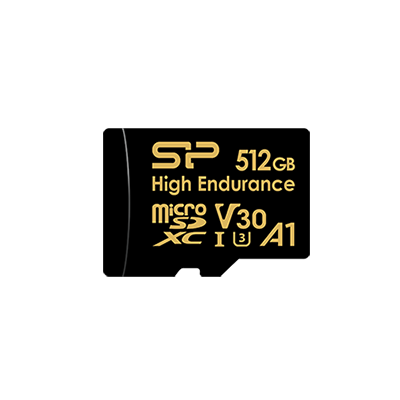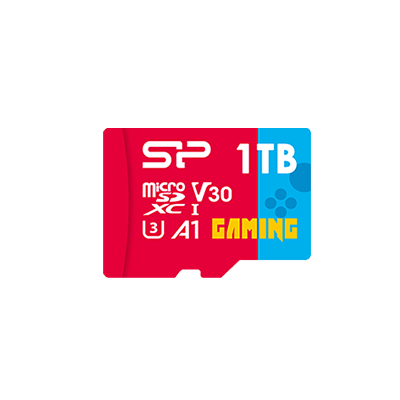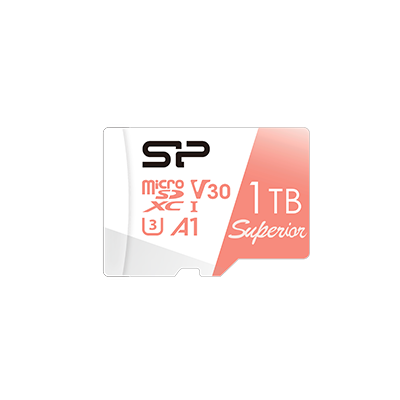Choosing the Right SD or microSD Card: Best Capacities for Cameras, Dash Cams, and Devices
![]()
This guide helps you choose the right SD or microSD card capacity based on your device and needs.
Shopping for a memory card? One of the most common questions is: How much SD or microSD card capacity do I need? Should you go all-in on a high-capacity card, or play it safe with a few smaller ones? It all comes down to your needs and budget. If you're capturing high-res RAW images, you'll want more storage. Shooting action-packed scenes? You'll need a card that's fast and tough. In this guide, we’ll help you pick the perfect SD or microSD card capacity, whether you're using a camera, drone, dash cam, or smartphone!
Menu
-Upgrade Your Storage: Pick the Right SD/microSD Card Capacity for Any Devices
Upgrade Your Storage: Pick the Right SD/microSD Card Capacity for Any Devices
Have you ever been ready for a full day of shooting, only to find your memory card full and end up deleting valuable photos just to make space? Or maybe the card you bought just isn't big enough, constantly filling up in the middle of recording? Or, when you needed to review surveillance footage, you discovered the files had already been overwritten? These are all signs that you haven't chosen the right memory card capacity.
This article will recommend the ideal memory card capacity for common use cases like photography, video recording, drones, surveillance cameras, action cameras, and smartphones.
1. Cameras
Photo Shooting
When shooting photos with a camera, the primary formats are JPG and RAW. Most casual users utilize the JPG format, which offers the advantages of smaller file sizes and minimal loss of detail. RAW format, however, fully preserves information like white balance, ISO, and color captured at the moment of shooting. This provides much more flexibility during post-processing for editing, but its drawback is significantly larger file sizes compared to JPG.
For example, a 128GB memory card shooting 25-megapixel photos can store approximately 9,500 JPG images, but only about 2,000 RAW images. That's nearly a 5-fold difference in capacity. However, many factors influence actual photo size, so refer to the table below for general guidance.
When choosing a memory card, estimating your required capacity starts with evaluating your daily shooting volume. For instance, if you typically capture around 2,000 RAW photos per day, a 128GB or larger memory card is recommended to ensure you have enough storage. For those who shoot frequently, it's wise to prepare at least two memory cards to safeguard against data loss due to unexpected failure or misplacement.
For travel photography, we suggest bringing two memory cards along with a USB-C OTG card reader. This allows you to back up photos to your phone each night, significantly reducing the risk of losing precious pictures. This setup is especially ideal for photographers who edit or manage files directly from their mobile devices.
If you primarily shoot in JPG format, general users can opt for a 64GB or larger memory card. Professional photographers, however, should consider 256GB or larger high-capacity.
![]()
A 128GB card can store at least 9,490 JPG photos, while a 256GB card can store at least 18,180 JPG photos.
Action photography
Action photography can be broken down into two main types of shooting:
- Long-duration video recording: It refers to continuous filming over an extended period, such as capturing scenic rides during cycling or hikes. It can also include multiple short clips taken throughout activities like skydiving, surfing, or other extreme sports.
- High-speed continuous shooting: It’s perfect for capturing fast-moving events such as basketball, soccer, or badminton, where burst mode helps freeze split-second, high-energy moments of athletes in action.
For uninterrupted, long video recordings, you'll need a memory card with large capacity and high durability. We recommend choosing a card that's 256GB or larger and has a "High Endurance" label. These cards can record over 5 hours and 25 minutes of 4K high-definition video. If you're filming shorter videos in multiple segments, using several smaller-capacity memory cards is a smarter choice. It helps minimize risk, if one card fails or goes missing, you won’t lose all of your footage.
If you're recording high-frame-rate videos, you'll need a memory card with a fast write speed. Always check your camera’s manual for recommended specifications and opt for V30, V60, or high-performance. For high-speed burst mode, we suggest using a U3 or higher-grade memory card to ensure that you don't fail due to slow write speeds.
Video Recording
When considering memory card capacity for video recording, you first need to understand common video formats. MP4 is the most commonly used format, known for its balance of good image quality and relatively small file sizes, ideal for everyday recording. As technology advances, more professionals are turning to Apple’s ProRes format, which retains more image detail and offers greater flexibility during editing. However, this comes at the cost of much larger file sizes compared to MP4.
For example, recording 4K 60P video with a 128GB memory card in MP4 format can record approximately 2 hours and 45 minutes. However, if using ProRes format, a 1TB memory card might only record about 1 hour. Additionally, when recording slow-motion video, higher frame rates consume more storage space, so these factors also need to be considered when planning memory card capacity. The table below shows a comparison of different memory card capacities and recording durations for your reference.
Many modern cameras now support recording 5K and 6K resolutions, and the latest iPhone 16 Pro / Pro Max supports 4K 120FPS ProRes, leading to increasingly larger file sizes. Therefore, for video recording, it's best to choose high-capacity memory cards. For instance, CFexpress Type B cards offer capacities up to 2TB, capable of recording up to 2 hours of 5.7K resolution ProRes format video. Their extremely high write speeds can easily handle high-resolution video recording.
2. Drone Photography
Drones typically have a limited flight time, around 30 minutes per charge, so it's unlikely you'll max out your micorSD card in a single session. However, if your drone crashes or gets lost, the memory card could be lost or damaged, making it impossible to recover your footage. Therefore, when using a drone, the most important thing is to distribute your files to mitigate risk, and always back up your footage immediately after each flight.
We recommend purchasing two micorSD cards with a capacity of 64GB or higher. This setup allows one card to store at least an hour of 4K video, while the other serves as a backup, minimizing the risk of data loss due to card failure or misplacement.
For added reliability, choose micorSD cards designed to withstand extreme temperatures and rigorously tested for durability, such as shock resistance, waterproofing, anti-static protection, X-ray shielding, repeated insertions, and device compatibility. These features greatly enhance the card’s resilience and help safeguard your valuable footage.
![]()
Drones typically use microSD-sized memory cards.
3. Dash Cams / Surveillance Cameras
Dash cams and surveillance cameras are primarily used for long-term recording to capture unexpected events, like reviewing footage immediately after a car accident. One of the biggest concerns is micorSD card failure or accidental file overwriting, which could cause you to miss capturing important moments. Furthermore, insufficient micorSD card capacity can lead to interrupted recording.
Opting for a high-capacity micorSD card allows you to store more video footage without frequent replacements. We highly recommend choosing memory cards with a High Endurance design, which are built to handle continuous, long-term recording without performance degradation.
For example, a 512GB High Endurance microSD card can record up to 98,000 hours of Full HD video and also supports smooth 4K recording. Since dash cams and surveillance systems use lower bitrates than professional gear, the same capacity can store more footage, up to 32 days of 1080P video, making it ideal for long-term use.
4. Gaming Consoles
Many people now use them for gaming consoles like Nintendo Switch, Steam Deck, and ROG Ally. They're convenient for plug-and-play functionality, easy capacity expansion, and seamless data transfer. When selecting a memory card for your gaming console, start by considering the storage needs of the games you play. Modern AAA games can be at least 70GB, but if you mostly enjoy smaller games, storage space will be less of a concern.
For the Nintendo Switch, game sizes are generally under 10GB. While the console has 32GB of built-in storage, if you plan to play for an extended period, it's still advisable to purchase an additional memory card to ensure you have ample storage.
Since these devices typically only support one memory card, we recommend choosing a higher capacity for future needs and selecting a card that meets the A2 standard for excellent random read/write speeds, which helps maintain a smooth gaming experience.
![]()
The Nintendo Switch also commonly uses microSD cards for storage expansion.
Conclusion
Ultimately, choosing the right memory card capacity depends on your specific needs. For professional photographers or drone users,it's not only important to have high-capacity cards, but also to carry multiple cards and back up data regularly to ensure safe storage. If you plan to record high-quality video, aim for V30, V60, or higher-grade high-performance memory cards. For high-speed continuous shooting, choose a U3 or higher-grade card to guarantee sufficient write speeds and prevent failed bursts.
For dash cams, which require long periods of continuous recording, prioritizing high endurance memory cards is crucial to ensure critical footage isn't lost. As for handheld gaming consoles, we recommend selecting memory cards that meet the A2 standard with excellent random read/write speeds to maintain a smooth gaming experience.
• • •

__25G12zvfC8.jpg)
__25G12zMnuG.jpg)
__25G125AOeQ.jpg)
__25G12eHIj7.jpg)
__25G12aUldS.jpg)





